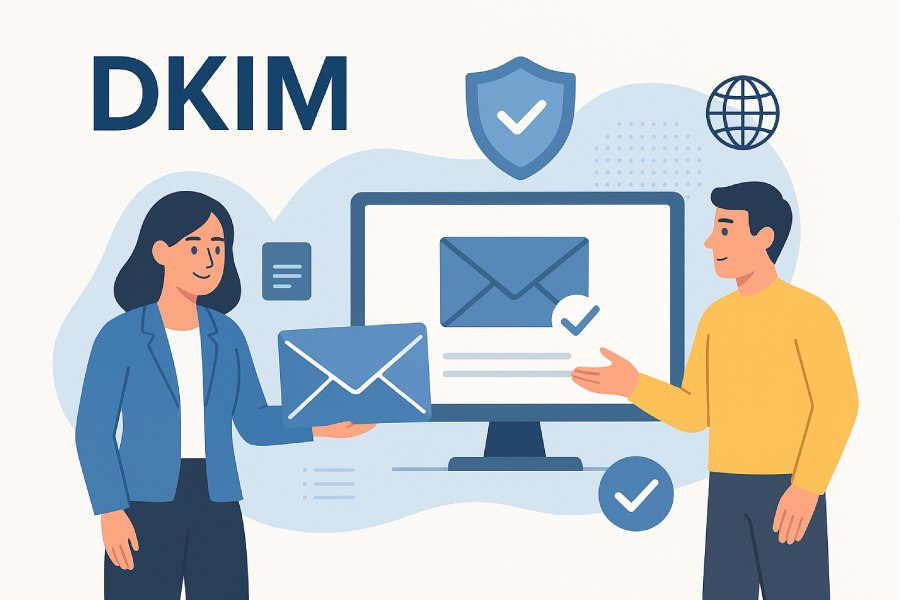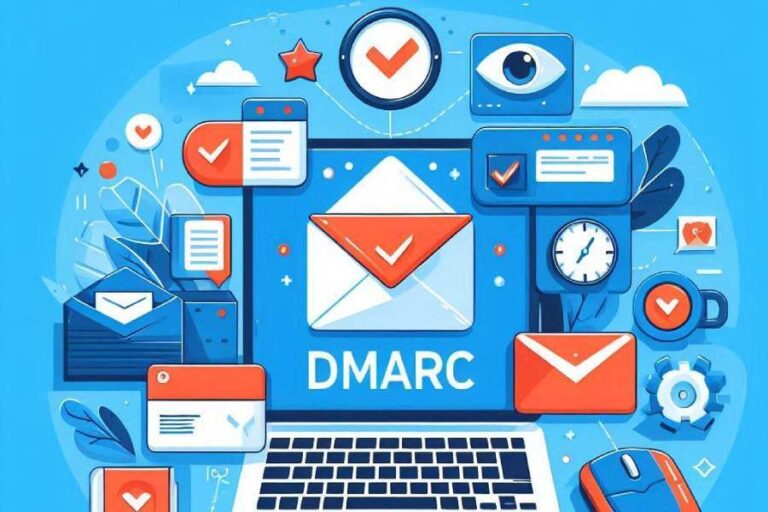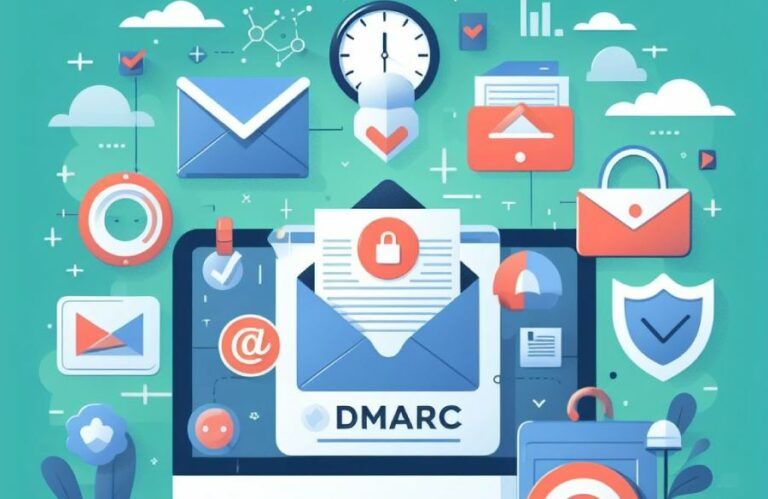Understanding DKIM Subdomains: Strengthen Your Email Authentication For Better Domain Protection
In today’s digital communication landscape, email authentication is essential for protecting your brand, domain, and customers from cyber threats. DomainKeys Identified Mail (DKIM) plays a pivotal role in this defense, ensuring that emails are genuinely sent from your domain and haven’t been altered in transit. By validating sender identity through cryptographic signatures, DKIM enhances trust, improves deliverability, and safeguards your organization against email spoofing and phishing attempts that could damage your reputation.
However, as organizations expand their email operations across departments, regions, or third-party providers, managing DKIM effectively becomes more complex. This is where DKIM subdomains come into play—offering granular control over email authentication at every level of your domain structure. Implementing DKIM for subdomains not only strengthens domain protection but also enables tailored security policies for different business units, ensuring consistent, reliable, and secure email communication across your entire digital ecosystem.
What is DKIM? A Brief Overview of Email Authentication
DomainKeys Identified Mail (DKIM) is a critical email authentication protocol designed to improve email security by verifying the sender’s identity and preserving email integrity during mail flow. Alongside SPF (Sender Policy Framework) and DMARC (Domain-based Message Authentication, Reporting & Conformance), DKIM forms a triad of email security protocols that protect email domains against common threats like email spoofing and phishing attacks.
Email authentication through DKIM works by attaching cryptographic signatures to email header fields, enabling recipient mail servers to validate that the message was genuinely sent by the claimed envelope sender. This validation ultimately safeguards against fraudulent emails that can damage email trust and domain reputation.
Organizations using platforms like Google Workspace, Microsoft Office 365, Amazon SES, Mailchimp, and SendGrid widely deploy DKIM as part of their domain verification and email sender policy enforcement strategy. The protocol leverages DNS records—specifically TXT records—to publish DKIM public keys, which recipients use during signature validation to authenticate incoming mails.

How DKIM Works: The Role of Cryptographic Signatures
At the heart of DKIM’s robust email validation mechanism lie cryptographic signatures generated using asymmetric public key cryptography. When an authorized mail transfer agent (MTA) within a mail server sends an email, it applies DKIM signing by using a private key to generate a digital signature for selected header fields, such as From, To, Subject, and Date.
This private key signature—embedded in the email headers as a DKIM-Signature field—ensures the message content and header fields have not been tampered with during transit. The signature includes a selector, which when combined with the email domain, points to the corresponding DKIM public key published as a key record in the sender’s DNS zone file.
Upon receipt, the recipient’s mail server extracts the signature from the email headers and retrieves the public key from the appropriate DNS TXT record based on the selector and domain specified. It then uses this public key to perform signature validation, confirming that the message was indeed signed by the legitimate sender’s private key and that email header analysis matches the signature scope.
DKIM’s cryptographic signatures thus play an essential role in ensuring email integrity, enhancing email delivery reliability, and supporting forensic analysis during email compliance investigations. Email proxy systems and security gateways, such as Barracuda Networks, Cisco, Mimecast, and Proofpoint, often inspect DKIM signatures as part of their email security posture.
Defining DKIM Subdomains: What They Are and Why They Matter
In the context of email authentication, a DKIM subdomain refers to a domain-level namespace beneath the main email domain that can independently implement DKIM signing and key records. Subdomain delegation allows organizations to partition email operations, often aligning with organizational units, geographic locations, or third-party email service providers like Postmark, SparkPost, Zoho Mail, or Fastmail.
For instance, a root domain example.com can have DKIM-enabled subdomains such as sales.example.com or marketing.example.com, each with unique selectors and associated public keys stored in their respective subdomain DNS configuration.

The domain hierarchy inherent in the DNS zone file facilitates this subdomain policy enforcement and helps implement fine-grained controls over email authentication. Subdomain delegation not only extends email spoof prevention capabilities but also enables organizations to maintain distinct email sender policies for various departments or vendors, refining their email reputation management and reducing attack surface exposure.
The Importance of DKIM Subdomains in Email Security
Deploying DKIM at the subdomain level is indispensable for comprehensive domain delegation and robust email security. Subdomain DKIM implementation offers multiple advantages in combating email phishing and spoofing. It allows domain owners to enforce strict domain verification across their entire domain hierarchy, providing multiple layers of email validation.
When paired with SPF and DMARC, DKIM subdomains help organizations orchestrate their email security protocols holistically. DMARC Analyzer and Valimail are tools that help monitor and manage such configurations by analyzing email header fields for alignment of SPF and DKIM at both domain and subdomain levels.
Moreover, subdomain DNS configurations that include dedicated TXT records for DKIM enable efficient key rotation without disrupting overall mail flow. Key rotation is a critical best practice for mitigating risks associated with private key compromise and ensuring ongoing email integrity and compliance with security standards.
Large enterprises using platforms like Cloudflare DNS or OpenDKIM for managing DNS zone files and cryptographic keys benefit from subdomain segregation to enhance signature validation granularity, improve email proxy filtering, and streamline email forensic analysis when investigating suspicious emails.
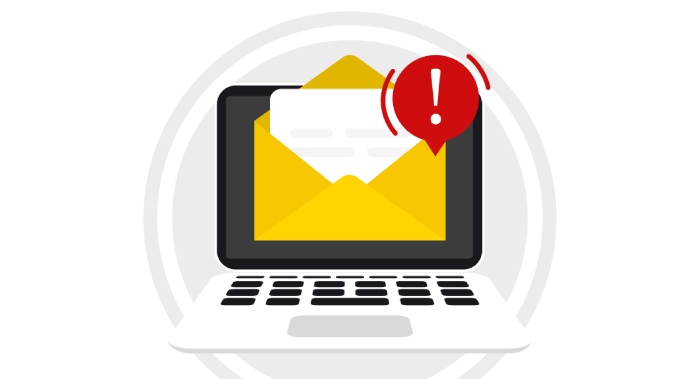
Setting Up DKIM for Subdomains: Step-by-Step Guide
Implementing DKIM for subdomains involves a combination of DNS configuration, private key management, and mail server setup to ensure seamless DKIM signing and validation across delegated domains. Below is a detailed step-by-step guide for setting up DKIM on subdomains:
1. Generate DKIM Key Pair
Start by creating a pair of keys—one private key to sign outgoing emails and a public key to be published in DNS. Tools like OpenDKIM or commercial solutions embedded in mail transfer agents can perform this. Ensure the private key is securely stored on the mail server responsible for sending emails for the subdomain.
2. Define Selector and Key Record
Choose a selector (e.g., “s1” or “mar2024”), which acts as a pointer for recipient servers to locate the public key within DNS. The selector and subdomain together form the domain name used to publish the public key as a TXT record in the subdomain DNS configuration:
`s1._domainkey.subdomain.example.com`
The TXT record includes the public key in the DKIM key record as per email security protocols.
3. Update the Subdomain DNS Configuration
Using your DNS hosting provider—such as Cloudflare, Google Workspace DNS, or Microsoft Office 365 DNS management—add the DKIM TXT record under the appropriate subdomain as per the key record designation. This allows mail servers verifying incoming mails to retrieve the public key required for signature validation from the subdomain’s DNS zone file.

4. Configure Mail Server and DKIM Signing
Update your mail transfer agent (e.g., Postfix, Microsoft Exchange, or cloud-based providers like Amazon SES or SendGrid) to use the private key for DKIM signing of outgoing emails from the subdomain. Ensure the mail server is configured to include DKIM-Signature header fields with the correct selector and email domain.
5. Test the DKIM Setup
Verify your DKIM configuration by using tools for email header analysis and signature validation. Popular testing tools include Mimecast DKIM validators, Agari threat intelligence platforms, and free online services that check DKIM alignment in the headers. Send test messages to inboxes like Gmail, Yahoo Mail, and others to confirm emails pass DKIM checks and appear correctly authenticated.
6. Monitor and Maintain DKIM Keys
Regularly perform key rotation to replace private and public keys periodically, mitigating the risk of private key exposure. Use email forensic analysis and DMARC reporting tools like DMARC Analyzer or Valimail to monitor DKIM performance and detect any anomalies in mail flow or compliance.
By carefully managing DKIM signing across subdomains, organizations can improve email spoof prevention, uphold email integrity, and reinforce email trust across diverse mail exchange records and service providers. This comprehensive approach greatly enhances domain verification and strengthens email protection throughout the domain hierarchy.
Common Challenges and Solutions When Using DKIM Subdomains
Implementing DomainKeys Identified Mail (DKIM) across multiple subdomains introduces distinct challenges related to domain delegation, subdomain DNS configuration, and key management. One significant hurdle is ensuring proper DNS records are established for each subdomain, including accurate TXT records that contain the DKIM key record associated with a specific selector. Incorrect configuration often leads to failed signature validation and email delivery issues, impacting the email sender’s reputation and mail flow trustworthiness.
Subdomain delegation complicates this scenario further. When enterprises rely on third-party email service providers such as Google Workspace, Microsoft Office 365, or SendGrid for different subdomains, coordinating email authentication protocols becomes cumbersome. To address synchronization issues, employing consistent selectors across similar domains or using automated DKIM signing utilities like OpenDKIM helps maintain streamlined DKIM signing processes.

Moreover, the complexity of key rotation—critical for email security and compliance—frequently presents operational challenges. Rotation of private keys stored securely on the mail server requires updating DNS zone files with public keys in the right TXT records without disrupting ongoing mail exchange records. Utilizing robust key management tools provided by platforms like Amazon SES or Postmark mitigates risks, ensuring continuous cryptographic signature validation without downtime.
Best Practices for Managing DKIM Records Across Multiple Subdomains
Effective management of DKIM records involves a comprehensive strategy encompassing regular domain verification, stringent email validation, and proactive key rotation policies. Establishing a centralized governance model that monitors the domain hierarchy and subdomain DNS configuration is crucial to maintain email integrity and avert phishing threats effectively.
Adopting subdomain policies enforced through DMARC complements DKIM by dictating how receivers should handle unauthenticated email, thereby reinforcing email spoof prevention. Platforms such as DMARC Analyzer and Valimail facilitate granular subdomain policy management, enhancing email security protocols uniformly across the entire email infrastructure.
Segregating DKIM selectors by subdomain aids in forensic analysis during email header analysis, enabling rapid identification of compromised keys or malicious activity. Developers and administrators can leverage tools from Cisco, Barracuda Networks, or Agari that integrate with existing mail transfer agents (MTAs) to automate DKIM signing and inspection of header fields, further strengthening email trust.
Integrating DKIM with SPF and DMARC for Comprehensive Protection
For holistic email security, integrating DKIM with Sender Policy Framework (SPF) and Domain-based Message Authentication, Reporting & Conformance (DMARC) is paramount. While SPF defines the email sender policy by specifying authorized mail servers through DNS records, DKIM verifies message authenticity by applying cryptographic signatures to email headers. DMARC then leverages both to offer policy enforcement and reporting, creating an effective defense against email phishing and spoofing.
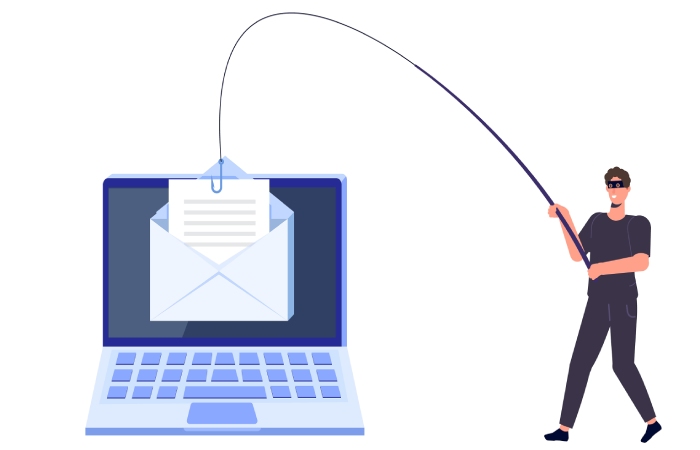
Configuring SPF and DKIM correctly within the DNS zone file ensures that mail servers, including those operated by Yahoo Mail, Gmail, and Zoho Mail, honor email validation protocols and improve email delivery success rates. DMARC’s reporting capabilities allow insights into mail flow and email compliance irregularities, which are essential for maintaining a high email reputation and minimizing abuse.
An integrated approach involving DKIM signing alongside SPF and DMARC policies can also coexist with email encryption and proxy solutions, commonly deployed in environments managed by Mimecast or Proofpoint. This synergy boosts overall email security capabilities by addressing multiple vectors of email spoof prevention simultaneously.
Monitoring and Maintaining DKIM Subdomains for Long-Term Security
Long-term security requires ongoing monitoring of DKIM subdomains, focusing on signature validation outcomes and key record integrity. Regular audits of email headers via email forensic analysis tools support prompt detection of tampering or failed DKIM verifications. Continuous scanning of DNS records, including MX and TXT records, ensures no unauthorized alterations affect mail exchange or domain verification statuses.
Key rotation schedules should be enforced systematically, ideally automated through cloud DNS providers like Cloudflare, to minimize operational errors during key transitions. Additionally, employing dashboard solutions provided by platforms like SparkPost or Postmark delivers real-time visibility into authentication status and potential security incidents.
Maintaining synergy between DKIM, SPF, and DMARC monitoring tools, such as those by Agari or Valimail, facilitates comprehensive threat intelligence and helps maintain email trustworthiness. Updating subdomain DNS configurations as company domain structures evolve is vital to uphold compliance with evolving email security protocols and support scalable mail flow.
Future Trends in DKIM and Email Authentication Technologies
The future of DKIM and email authentication is leaning towards enhanced automation, tighter integration with evolving email security frameworks, and adoption of stronger cryptographic algorithms. With increasing email phishing sophistication, the use of advanced public key cryptography techniques, coupled with automated key rotation and selector management in DNS records, will become standard practice.
Emerging standards are exploring deeper links between DKIM and emerging email encryption technologies to bolster message confidentiality alongside email integrity. Integration with next-gen email sender policy frameworks and AI-driven email header analysis tools from leaders like Cisco and Proofpoint promises faster anomaly detection and improved email security postures.

Further, subdomain delegation models will evolve to accommodate dynamic domain hierarchies, allowing organizations to delegate email sending authority securely while maintaining centralized control over DKIM and DMARC records. Advanced mail proxies and cloud-based mail servers are expected to embed built-in DKIM signing and verification processes to simplify management for high-volume platforms such as Mailchimp, SendGrid, and Amazon SES.
FAQs
What is the role of DKIM in email authentication?
DKIM uses cryptographic signatures added to email header fields to validate the sender’s domain, ensuring email integrity and preventing spoofing. It works alongside SPF and DMARC to reinforce email security and bolster email delivery trust.
How does DKIM work with subdomains?
DKIM requires separate DNS TXT records for each subdomain to publish public keys associated with private keys used in DKIM signing. Proper subdomain delegation and DNS zone file management are essential for effective email validation across subdomains.
Can key rotation affect email delivery?
If the DNS records for new DKIM public keys (key records) are not updated or propagated timely, signature validation failures may occur, causing email delivery issues. Automated key rotation tools and monitoring help prevent such disruptions.
How do organizations monitor DKIM effectiveness?
Organizations use email header analysis and forensic analysis tools to examine signatures and validate DKIM statuses. Services like DMARC Analyzer and Agari provide dashboards for continuous monitoring and reporting on DKIM and other email authentication protocols.
What advantages does integrating DKIM with SPF and DMARC provide?
Combining DKIM’s cryptographic signatures with SPF’s mail server authorization and DMARC’s policy enforcement brings comprehensive email spoof prevention. This integration enhances overall email trust, reputation, and compliance with email security protocols.
Which email service providers support DKIM?
Most major providers, including Google Workspace, Microsoft Office 365, Yahoo Mail, Amazon SES, Mailchimp, SendGrid, and Zoho Mail, support DKIM signing and verification as part of their email security infrastructure.
Key Takeaways
- DKIM subdomain implementation requires meticulous DNS configuration and thoughtful domain delegation to ensure smooth mail flow and email integrity.
- Best practices include centralized DKIM record management, consistent selector usage, and regular key rotation for robust email spoof prevention.
- Integrating DKIM with SPF and DMARC forms a powerful defense against email phishing, improving email reputation and sender trust.
- Continuous monitoring and auditing of DKIM, leveraging tools from industry leaders, are essential for sustaining long-term email security and compliance.
- The future of DKIM involves automation, stronger cryptography, and closer integration with evolving email security protocols to counter increasingly sophisticated threats.

